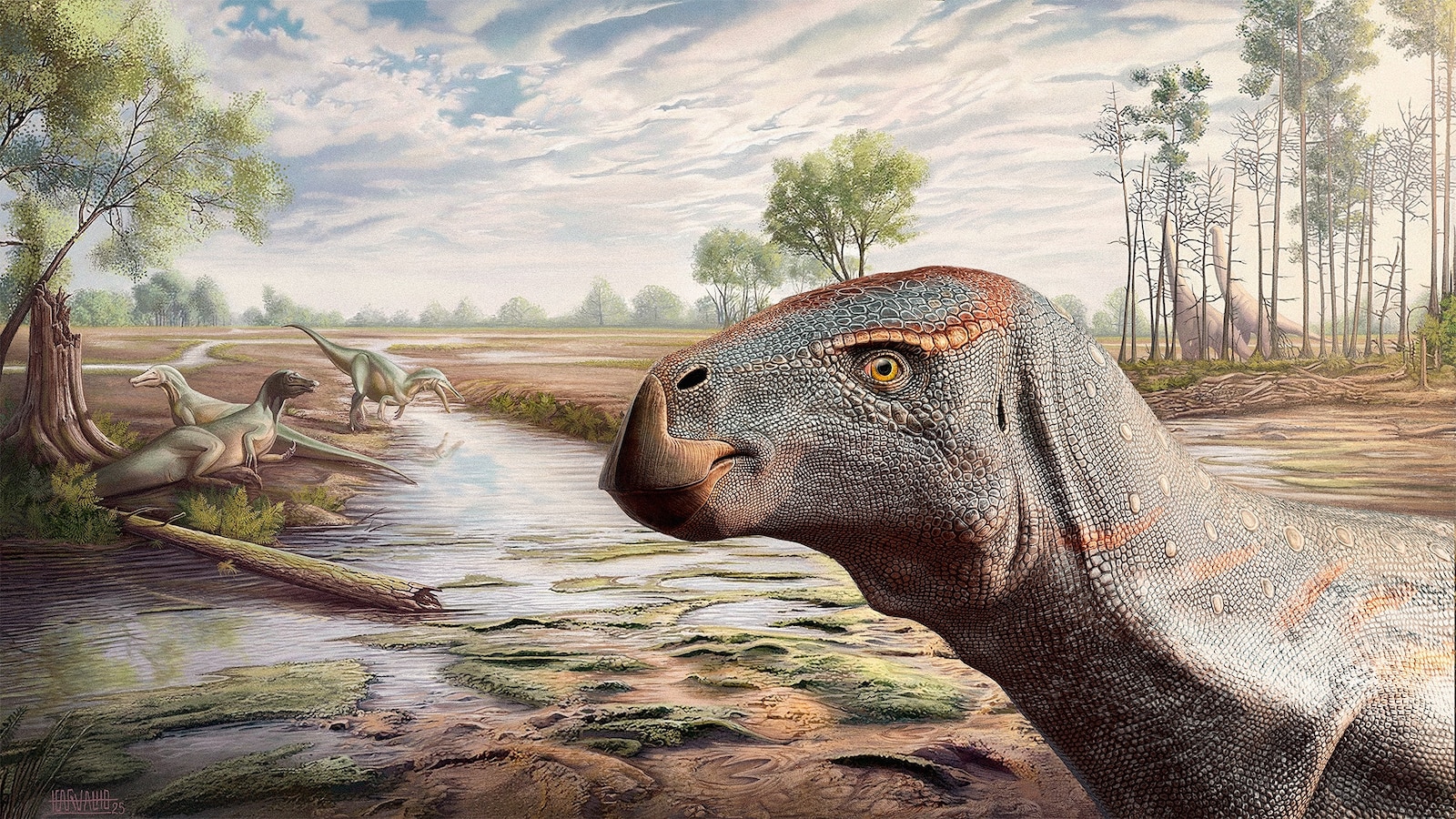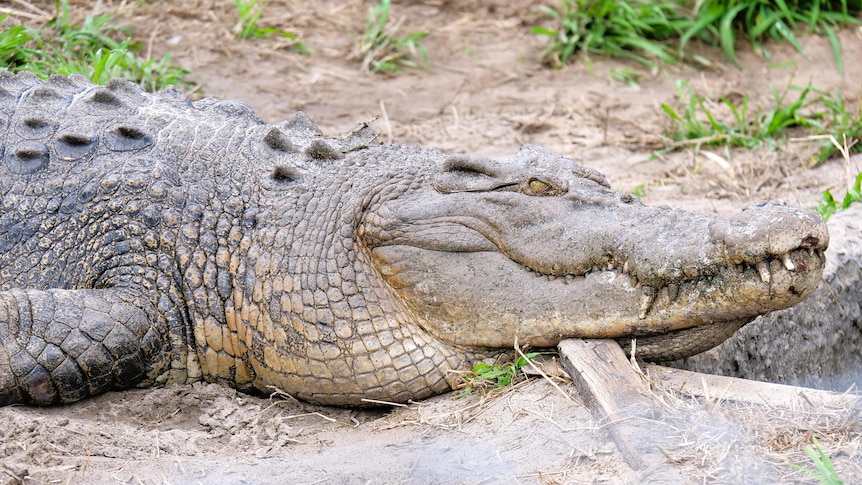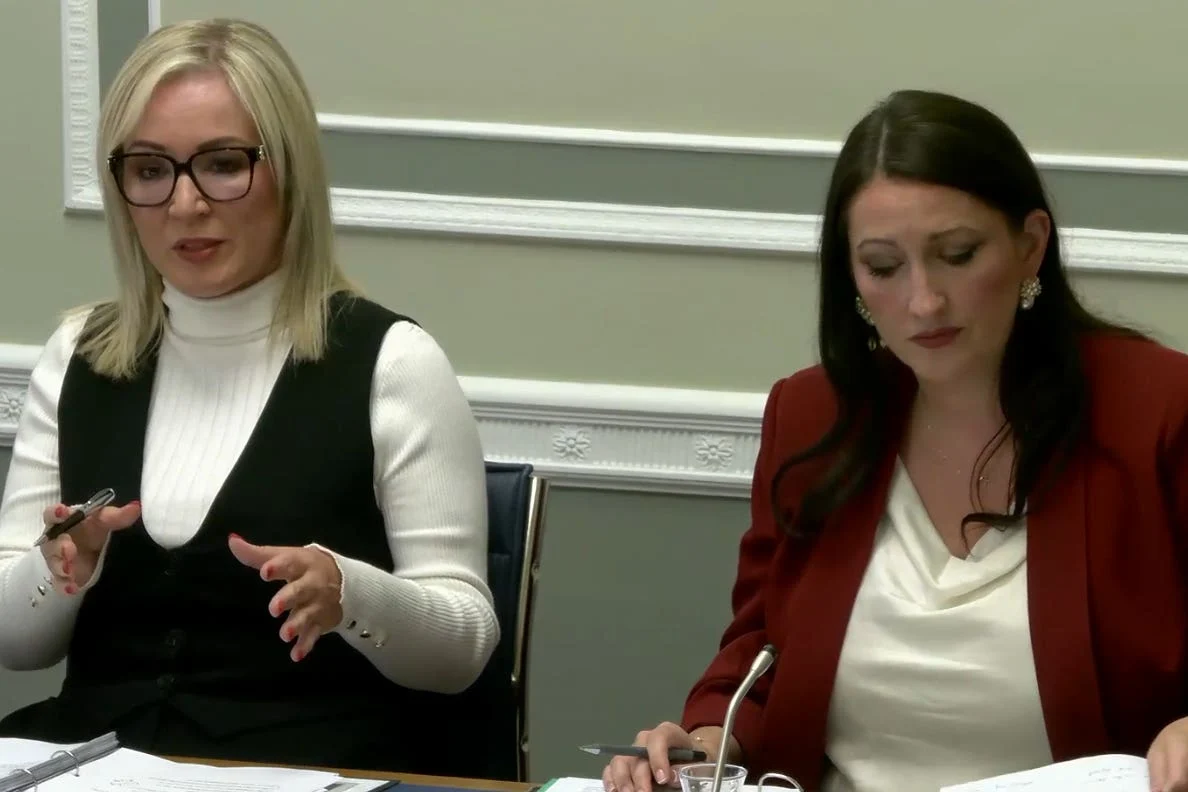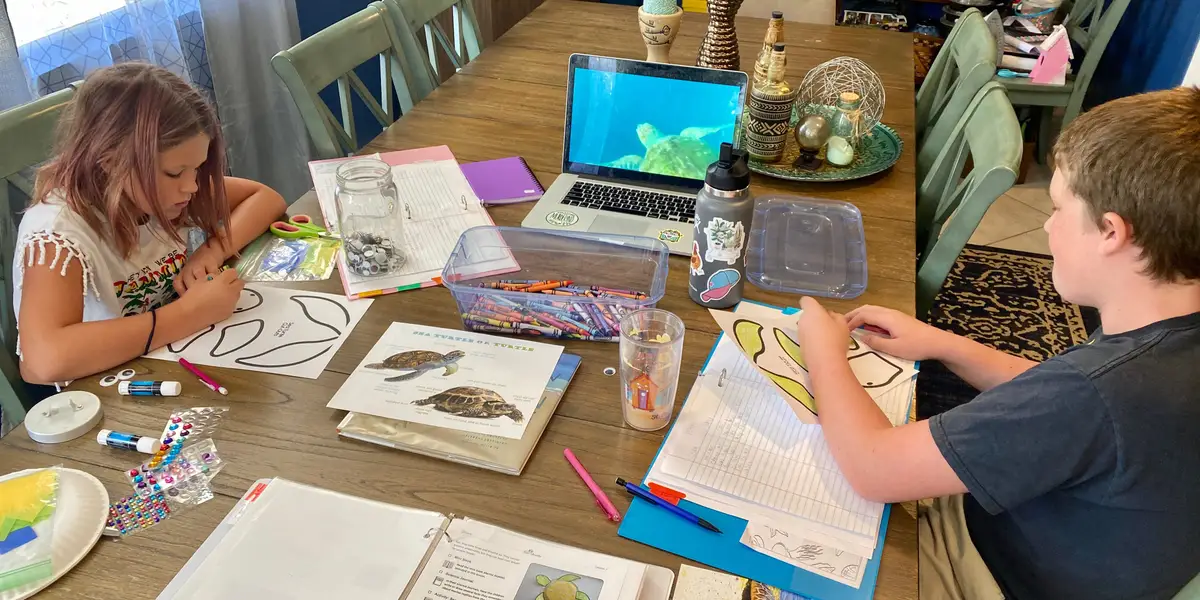
Paleontologists have discovered a new species of iguanodontian dinosaur that lived 125 million years ago during the Cretaceous period, they said in a research paper.
Examination of fossils found in the Papo Seco Formation in Portugal in 2016 uncovered a species dubbed Cariocecus bocagei, a medium-sized iguanodontian, according to the paper, published last week in the Journal of Systematic Paleontology. Iguanodontians were group of herbivores that also included triceratops and stegosaurs.
Researchers first noticed a 20-inch “rock” with what turned out to be a line of fossilized teeth embedded within it, Filippo Bertozzo, a paleontologist at the Royal Belgian Institute of Natural Sciences and lead author of the paper, told ABC News. After that, he said they found more bones in the area.
Based on reconstruction, the paleontologists determined that the one they found did not reach full skeletal maturity.
The specimen differs from other iguanodontians in that its zygomatic bone, or cheek bone, is fused to the upper bone of the jaw. The fusion — or ossification — is seen in modern birds, according to the paper.
One hypothesis is that the dinosaur needed stronger jaws to bite down on harder fruits or seeds, Bertozzo noted.
“They are fused — something that we have never seen in any other iguanodontian,” he said.
Iguanodontians originated in South America and dispersed through North America through the Upper Jurassic period, according to the paper. Most iguanodontians were confined to the U.S., near Wyoming.
That group of herbivores were among the first dinosaurs to be discovered and studied, according to the paper.
The team that made the discovery included researchers from Belgium, the U.S., Portugal and Italy.
The region south of Lisbon is known for dinosaur bone findings as well as other ancient animals of the crocodile, fish and tortoise families, he added. The fossils were found along the southwestern shore of the Setúbal Peninsula, according to the paper.
“It tells us that the environment was a flood swamp near the coastline valley,” Bertozzo said.
The paleontologist expects more dinosaurs — including C. bocagei or new species — to be found nearby.
“This is the goal for next year, that if we go there and we dig more, it’s very likely that we might find the new specimens of this dinosaur,” he said.



